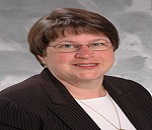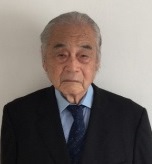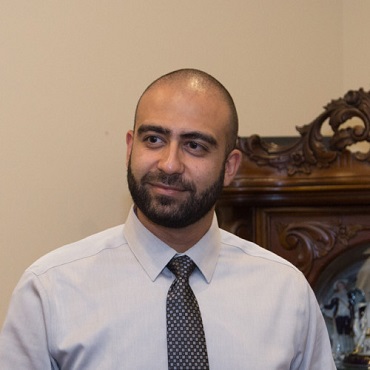Scientific Program
Keynote Session:
Title: Safety and efficacy of rTMS in treating depression and cognitive dysfunction following traumatic brain injury: Experience of an outpatient neuro-rehabilitation center
Biography:
Gregory O'Shanick, M.D., is a former chairman of the board of directors of the BIAA. In May 2011, he was named Medical Director Emeritus for BIAA, after serving for 14 years as its inaugural National Medical Director. Over the past 30 years, he has treated more than 11,000 patients with brain injuries while serving on the faculties of four medical schools and in private practice. Since 1991, Dr. O'Shanick has been the President and Medical Director of the Center for Neurorehabilitation Services in Richmond, Va. He holds board certification in four medical subspecialties (Brain Injury Medicine, Behavioral Neurology and Neuropsychiatry, Psychosomatic Medicine and General Psychiatry) and has published three books, 12 academic textbook chapters and more than 70 peer-reviewed publications. He has presented at national and international medical conferences and has served as an advisor to numerous federal agencies including the Centers for Disease Control and Prevention, Department of Defense, National Institutes of Health and National Institute on Disability and Rehabilitation Research.
Abstract:
Presented is a convenience sample of 26 outpatients (9 male; 17 female) who had been treated in an out-patient neurorehabilitation center for traumatic brain injury (TBI) and developed co-morbid depression, non-responsive to multiple courses of antidepressant therapy, and subsequently received repetitive transcranial magnetic stimulation (TMS) for their depressive syndromes. Time since TBI to TMS varied from 16 months to 53 years, with severity ranging from mild to severe. Measures of mood (PHQ9) generally were reflective of improvement in depressive symptoms. Concomitant improvement in cognition and pain tolerance were also demonstrated with subjective and objective measures. The use of TMS in individuals following TBI with depression appears to be a safe modality offering affective and cognitive benefits based upon this open trial. Further studies are warranted.
Title: An innovative leadership model for dementia care teams
Biography:
Dr. Janice Hoffman-Simen is an Associate Professor of Pharmacy Practice at Western University of Health Sciences in Pomona California, USA. She is a Board Certified Geriatric Pharmacist and Fellow of the American Society of Consultant Pharmacists. She received her Pharm.D from the University of Southern California and completed a Clinical/Administrative Psychiatric Pharmacy Practice with an emphasis in geriatrics residency at the University of Maryland, Baltimore. Dr. Hoffman-Simen received a second doctorate in Education (EdD) in Organizational Leadership from the University of La Verne. Professionally, she has received accolades from the Commission for Certification in Geriatric Pharmacy, Excellence in Geriatric Practice Award 2014 recipient.
Abstract:
The healthcare team possesses the clinical and medical capabilities to meet the demands and challenges of Dementia care. Teams in healthcare have been used for centuries however the functionality of teams is based on the leadership conducting the team. The problem is that teams function only as well as the leadership facilitating the process.
The purpose of this keynote presentation is to describe the primary factors impacting healthcare teams today, to present a new and innovative model that ensures effective leadership within interdisciplinary Dementia healthcare teams, and the unique role each profession may play as team leader in meeting the resulting challenges.
The Simen-Schreiber leadership model was built on clinical expertise, emotional intelligence and managerial skills as vital for each healthcare team member to possess for effective and efficient team operations. The proposed leadership model was designed with the foundational pillars of communication, interpersonal engagement and shared decision-making in order to achieve successful patient-centered outcomes. Communication may be at the apex of healthcare team but interpersonal engagement is just as important. If team members cannot engage without disputes and emotionally charged discussions the team will falter.
From a theoretical perspective, a healthcare team should incorporate a combination of at least four leadership theories; servant leadership, team leadership, transformational leadership, and situational leadership are integrated. These four leadership theories encapsulate the theoretical functionality for the Simen-Schreiber Leadership Model for Healthcare Teams and will be explored in this presentation.
Title: Data driven digital smart farming to optimize agricultural resources in mitigating climate change
Biography:
Ganesh C. Bora is Precision Agricultural Program Leader and an Associate Professor of Precision Agriculture and Machinery Systems at Mississippi State University, USA. He is the Chair of USDA Committee NCERA180: Precision Agriculture Technologies for Food, Fiber, and Energy Production. A highly regarded experienced professor for 25 years, he conducts research in mitigation of climate change, telemetry, UAS, data management, precision planting, energy savings through auto-guidance, sensing techniques for VRT, renewable energy. He was the Director of NDSU’s Bio-Imaging and Sensing Center from 2010 to 2016. He has received Superior Paper and AE50 award from ASABE. He has maintained excellent global presence, received patent in Kazakhstan and conducted workshops in Vietnam, Thailand, India and Bangladesh; besides teaching “Advanced Agricultural Technology Management” in Kazakhstan. He co-chaired the “Mechanization and Precision Agriculture” committee in ‘Engineering and Technology Innovation for Global Food Security,’ in South Africa. He received his PhD from Kansas State University, Manhattan, KS, USA.
Abstract:
Data-driven digital farming have been adopted by progressive farmers to optimize the use of chemicals and fertilizer to reduce cost and increase crop yield. Energy input in agriculture has increased tremendously, and accounts for about 17% of total U.S. energy consumption. Practical, yet innovative solutions will be required if we are to meet growing demand for food in changing climate that reduces yields. Wide-spread adoption of precision agriculture (PA) is a practical solution to optimize the benefit-to-cost ratio in agriculture. PA optimizes input use-efficiency for resources such as fertilizer, chemicals, seeds and irrigation water to reduce crop production costs and to enhance crop yield while simultaneously reducing harmful environmental costs associated with inefficient use of agricultural inputs. Even assuming only 10% of the US farms adopt PA technologies, 61 million liters of fuel, 1.8 million kg of insecticide and 1.9 million liters of herbicide can be saved annually, reducing not only farm operating costs but also the cost to human and ecosystem health related to agricultural pollution. Additionally, PA has great potential to reduce and offset GHG emissions by optimizing chemicals, fertilizer and water applications through variable rate application. Smart farming technologies greatly aid in mitigating climate change impacted by agriculture.
Title: Crossing the bridge from research to clinical: Possibility to use deep neural network for the individual brain modeling
Biography:
Dong Hyeon Kim completed his electronic engineering from Korea University of Technology and Education, Cheon-an, South Korea. He completed his PhD from School of Information and Communications, Gwangju Institute of Science and Technology (GIST), South Korea. He completed his Post Doctors degree from Biocomputing Lab, Gwangju Institute of Science and Technology (GIST), South Korea. Now he is the Co-founder & Chief Technology Officer NEUROPHET Inc., Seoul, South Korea.
Abstract:
The individualized stimulation parameter selection is important to treat neurological disease or enhance brain function functionality. For this, simulation study using individual brain model is essential to search optimal stimulation parameter in each patient. However, it is computationally expensive and takes too long time to use it in clinical situation. Among the procedures of individual brain modeling, segmentation of MRI image is the most important part and takes a lot of time. In this talk, we will show deep neural network to segment MRI image and its practical feasibility.
Title: New mechanics-mathematical methods in natural processes
Biography:
Vladimir A. Babeshko has completed his HD (Doctor of Mechanics) in 1974 from Russian Academy of Sciences. For many years he is a Chief of Scientific-Research Center for Forecasting and Preventing Geo-ecological and Technologic Disasters Kuban State University and Southern Research Center, Russian Academy of Sciences. He has 20 patents, published 7 monographs and more than 450 papers in reputed journals such as Russian Academy of Sciences and many others.
Abstract:
A new mathematical method elaborated in Russia, that has mechanical basis and is called the method of block element, is presented in this report. Its elaboration demanded to include areas of mathematics of high level: topology, external analysis, factorization methods, integral geometry, automorphisms and other areas of mathematics. The numerical-analytical method is created to explore and solve any spatial boundary problems for systems of differential equations in partial derivatives, linear and nonlinear. Its difference from the finite and boundary element methods consists in absence of any discretization. It solves precisely all boundary problems which are solved precisely by other methods, for example, separation of variables. Among advantages of the method are mechanical characteristics detected in the process of solving problems, tension and displacement, and not density on the boundaries of domains of boundary problems, lack of necessity of diagonalization of operators of the system of differential equations, opportunity to use numerous works of scientists-mechanics in areas of differential and integral equations on some stages of applying the method. The method allows to carry out investigation in conversational mode, that allows to detect regularities connected with characteristics of solution and its characteristics. There are also particular difficulties in applying the method of block element, which are caused in the first place by requirement of quite high level of knowledge of mathematics used by its application. The results of applying this mechanics-mathematical approach to different boundary problems which were not studied before have been gotten. These are problems of the strength theory, materials science, seismology, climatology, nanomaterials. Problems of seismology are connected with mechanical harbinger of seismicity based on the estimate of concentration of strains on tectonic faults.
Oral Session 1:
- Manifestation of Climatic Change | Regenerative Agriculture to Reverse Climate Change | CO2 Capture and Sequestration | Climate Change & Health Consequences | Global Warming | Climate Change & Adaptability Development | Climate Change and Sustainability | Industry, Industrialization, & Climate Change | Climate Change & Adaptability Development | Climate Change & Biodiversity
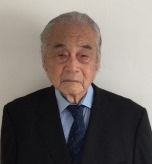
Chair
Shoichiro Ozaki
The Institute of Physical and Chemical Research (RIKEN), Japan
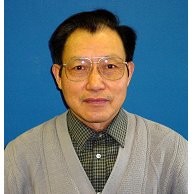
Co-Chair
Jianmin Jiang
Beijing Meteorological College, China
Title: Climate Can Be Regulated by Effective Use of NOx And Waste Water NP
Biography:
Ozaki’s primary contribution is to achieve the first total synthesis of optically active myo-inositol trisphosphate, and a wide range of other inositol phosphates and lipids for subsequent physiological studies. Ozaki discovered DAB: regulator of Ca2+ release, anti-aging reagents. Ozaki is proposing method to protect global warming. His method is promotion of CO2 assimilation by effective use of NOx and drainage nitrogen, phosphorous, many countries hating NOx as pollution gas and eliminating by ammonia. Ozaki is considering that NOx is best promotor of CO2 assimilation
Abstract:
About 510 billion tone CO2 is produced by burning of fossil fuel and respiration of animal. CO2 142 billion tone increased in 2017. If we can increase fixing of CO2 by promotion of CO2 assimilation, global warming will be protected. To promote CO2 assimilation, supply of nutrient N and P is essential. 14.4 billion tone NOx is produced when 140 billion fossil fuels is burned. Many governments are eliminating NOx and NP in drainage as pollution substances. NOx and NP in drainage are promotor of CO2 assimilation, fertilizer of plant growth. Therefore, these action are promoting global warming. NOx elimination is giving bad effect on grain, fish production, electricity price, GDP growth rate. By effective use of NOx and waste water NP, we can increase plankton CO2 assimilation at sea. Stopping of NOx elimination and stopping of waste water purification is easy method to protect global warming and to regulate climate.
Title: Coherency Analysis of Trend Change-Points in Monthly Temperature between the Global Warming and in China Mainland
Biography:
Jianmin Jiang received M.S. degree in 1978 from Peking University in China, and completed a Post-doctor in 2002 from University of Hawaii in USA. He was a professor at former Beijing Meteorological College and a visiting scholar to Meteorological Office College of UK and to Hamburg University in Germany. After retiring in 1999, he visited to USA and completed a post-doctor work at University of Hawaii and NOAA. His research interests are mainly in climate changes, statistical analyses and especially in Change point analyses.
Abstract:
This paper introduces the algorithm of scanning detection for change-points in subsample trends, which was developed by this author, and applying to monthly temperature series of both the global warming and in China mainland for 1951/1 -- 2017/12. The main results were obtained as follows:
- Nine change-points, then 10 sub-periods for the global warming and 8 change-points, then 9 episodes for China mainland were detected out respectively;
- The coherency contour pattern shows that the major areas were positive, which suggest the trend-change directions were in phase, but that in some short-periods were negative, which denote the trend-changes were out of phase;
- The negative coherency occurred around 1956-1960, 1963-1968, 1774-1978, 1997-2000,
- 2006-2010 and 2014-2017 (see figure below). The reason why the negative coherency happened are needed to be investigated further.
- The last obvious decline in the global warming is also needed to be observed and concerned further, but it has not yet appeared in China mainland so far.
Title: Some Mechanical Analogy and The Climate Anomalies
Biography:
Vladimir Babeshko has completed his pHD (Doctor of Mechanics) in 1974 from Russian Academy of Sciences. During many years he is a chief of Scientific-Research Center for Forecasting and Preventing Geoecological and Technologenic Disasters Kuban State University and Southern Research Center, Russian Academy of Sciences.He has 20 patents, published 7 monographs and more than 450 papers in reputed journals such as Russian Academy of Sciences and many others.
Abstract:
It is showed that researches of some technical tasks can be useful in some adjoined spheres. Combined boundary task of thermal conductivity in layer is observed as an example. It’s showed that the result, obtained by means of researches of this boundary task, are correlated as analogue with some phenomena in the environment, strict explanations of which don’t exist. For example, there is an explanation of well- known phenomenon in abroad and in our country “Indian summer†as steady anticyclone in hydrometeorological literature. But there is no any physico-mathematical researches of this phenomenon. It’s interested to try to find analogues for other phenomena. Analogues are found by observing of mixed boundary task for parabolic equation about expanding of warmth in the layer in suggestion of change of boundary conditions on one of the layer border. It has been established that it is convenient to describe a number of natural anomalous processes, which consist in localizing the energy within certain spatial regions, as a result of manifestation of a natural virus, as a vibrio virus in mechanics. The natural virus makes it possible to reveal the conditions of occurrence of anomalies and, thus, to search for various ways of decreasing fatal natural processes. Introduction of natural virus is a result of detecting new regularities in the natural processes, which are reasonably adequately describes by mixed boundary-value problems in a great variety of fields. It is convenient to represent these regularities by reproducing the concept of a natural virus, and to interpret the occurrence of anomalies as its manifestation at different levels up to an anomalous state of the natural processes under consideration. It can assert that the distribution of the natural-process energy is reasonably uniform in a region when the virus does not manifest itself. As the virus manifests itself, the process energy is localized in one or several zones of the region. At the limit, the localization results in anomalous behavior of the natural process in the indicated zone or outside of it depending on the natural-process type.
Title: Climate Change, Its Effects and Possible Solutions on Our Environment
Biography:
Yakubu Muntaka Musah is my name, MBA and BBA . I completed my Bachelor Degree at University of professional studies, accra in August 2013 with distinction. A few years after my completion, I engaged in many academic activities including attending a Bio plastic conference in 2017, in Paris, France and gave an oral presentation, to which I was awarded the Student Ambassador for the conference. My vision is to see the environment green, hence my award as the student facilitator in the just ended Biofuel conference in Edinburg, Scotland.
Abstract:
Climate change may refer to a change in the average weather condition or in the time variation of weather within the context of longer term average condition. Climate change is caused by factors such as biotic processes, variations in solar radiation, and other human activities that have been identified as primary causes of ongoing climate change, often referred to as global warming. There is no doubt that the impact of climate change are beginning to manifest on the entire globe and more particularly on the developing nations. Climate change and climate variability may pose serious challenge to national development. Government and other state agencies have adopted measures to minimize the impact of climate change due to its threat to global development and effort to end poverty. Without urgent action, climate impact could push an additional 100 million people into poverty by 2030.
Climate change is a major issue that affects farmer’s especially rural farmers within our communities. Farmer’s already struggle to get a fair price for their goods, safe guard against weather and pest to stay in business. The impact of climate change is poised to make matters worse for young farmers. This is because there would be a low in production pattern due to higher temperature. These low production patterns as a result of climate change have negative consequences on our farmer’s income. Environmental issues is one major issues caused by climate change. The impact of climate change has led to the various erosion caused either by human activities or natural disaster. A human activity such as sand winning and illegal mining has a negative consequence on our environmental landscape such as erosion. A natural environmental issue such as volcanic reaction also has negative impact on the environment. One other issue of climate change is economic issues. The economy is likely to setback if agricultural sector that contributes tremendously to the Gross Domestic Product is affected by climate change. This is possible because when there is a change in temperature and farmers yield declined, this decline have negative impact on the performance of the economy. Many communities will be force to move as they are exposed to rising sea levels, drought etc. as a result of climate change impact. Communities are also susceptible to the health concern associated with climate change such as heat related ailment from higher temperature, malnourishment due to increase strain of food. Climate change has the effect of changing the habitat of wildlife from their natural location and more especially hunting wildlife illegally. The issue of illegal hunting of wildlife has a negative effect on the environment. This is because the setting of bush fires to trace wildfire degrades the environment which causes excessive heat temperature leading to global warming. The increasing use of traditional crude to power our thermal plants has the effects of depleting the ozone layers which give rise to global warming which eventually leads to variability in the environment. So the effects of climate change have adverse effects on the environment, economy and the health of people. To this end, a number of measures needs to be considered to revert the adverse effects of climate change and global warming, In addition, industries and factories should also find alternative source of energy in powering their thermal. If the use of traditional crude is to be used, they should not go beyond certain level as a way of reducing the effects on climate change. Moreover, thermal plants and vehicles should be manufactured to use other sources of energy rather than our traditional crude due to its effects on the environment. Also, countries can sign a memorandum of understanding on the level of crude to use within a country in a year, so that countries under the agreement would not go beyond the agreed use of crude as a convenient way of reducing the effects of climate change. If any countries go beyond the agreed use of crude, sanctions should be impose and a fine paid. In effects, these are the effects of climate change and its possible solutions to reduce the effects to ensure environmental and health sustainability.
Title: Environmental Effect of Climate Change
Biography:
Abubakar Zakaria holding Bachelor of Administration certificate from University of professional studies and he has completed his Master’s Degree at the same University in August . A few years after my completion, I engaged in many academic activities. As an ardent and disciplinary leader, my vision is to encourage the young generation to succeed in their attempt to climb the academic ladder. My interest is to engage in panel discussion towards achieving environmental excellence.
Abstract:
Environmental effect of climate change is the release of contaminated substances into the environment that causes adverse change. It can take several forms ranging from chemical substances, noise, heat, light, car pollution etc. climate change comes from both human made sources such as mining, Agricultural, industries, construction among others. Motor vehicle pollution are the most leading cause of climate change across the world. China, japan united states are the world leaders in air pollution. About 400 million metric tons of waste are generated each year from waste that pollute the environment. It is of no doubt that the frequent environmental pollution leads to climate change which adversely have effects on the lives of human. Climate change may refer to a change in the average weather condition . Climate change is caused by factors such as biotic processes, variations in solar radiation, and other human activities that have been identified as primary causes of on-going climate change, often referred to as global warming. Climate change is also the major cause of environmental pollution. The impact of climate change has led to the various erosion caused either by human activities or natural disaster. Human activities such as sand winning and illegal mining have a negative consequence on our environmental landscape such as erosion. Climate change is also the cause of global warming through the depletion of the ozone layer. The excessive vehicular smoke and industrial smoke has major effects on our environment. This is cause by the depletion of the ozone’s layer. The increasing use of traditional crude to power our thermal plants has the effects of depleting the ozone layers which give rise to global warming which eventually leads to variability in the environment. So the effects of climate change have adverse effects on the environment, economy and the health of people. Numerous factors have been adopted to reduce the effect of climate change and global warming. Among it is as follows;
- The use of biofuel and bioenergy as an alternative source of energy should be encouraged and use. The use of biofuel has been considered as the most cleaner’s source of energy which is environmentally friendly than our traditional use of crude.
- In addition, industries and factories should also find alternative source of energy in powering their thermal. If the use of traditional crude is to be used, they should not go beyond certain level as a way of reducing the effects on environmental pollution
Title: Advisory talk on winter in Canada
Biography:
Dr. Jerry Toupin has travelled around North America and Europe. He has lived in many cities in Canada and taught at universities across the country, including 25 years in the Earth Sciences department at the University of Alberta (Campus Saint-Jean, Canada). Passionate and International Expert about the concept of winter, cold and snow, he published more than 50 papers and instructional manuals while at U of A. He has also worked as a scientist for Environment Canada and Climate Change and other Canadian Federal Departments and private companies doing research on the topic of winter. He has included the results of some of his research in this book and bestseller: Winter in Canada
Abstract:
Advisory talk on winter in Canada, it might include the changes of Climate specially in winter season.
Title: Advisory talk on TMS/DBS
Biography:
Simon Kung has completed his medical school and residency in Psychiatry at Mayo Clinic, Rochester, Minnesota. He is the medical director for Mayo Clinic’s inpatient Mood Disorders Unit, and co-director of Transcranial Magnetic Stimulation.
Abstract:
Background: Obsessive-compulsive disorder (OCD) is frequently difficult-to-treat, with many patients not improving with standard antidepressant and cognitive behavioural therapy. Transcranial magnetic stimulation (TMS), used clinically for major depressive disorder, has also been extensively studied for OCD. This presentation reviews the recent TMS evidence for OCD, including the August 2018 U.S. FDA approval.
Methods: A pubmed.gov search of TMS and OCD was performed through September 2018. Twenty randomized sham-controlled studies were identified, not including the unpublished “deep” TMS study which gained FDA-approval for OCD.
Results: Standard TMS had modest benefit in reducing OCD symptoms. Stimulation over the supplementary motor area (versus the right or left dorsolateral prefrontal cortex), using low frequency (versus high frequency), longer sessions of stimulation, and longer follow-up times, yielded better results. None of these studies used the new “deep” TMS coil targeting the anterior cingulate cortex, for which a study of 100 randomized patients showed superiority of active versus sham (38.1% vs 11.1%) in improving OCD symptoms by at least 30%.
Conclusions: There is evidence to support TMS for OCD, and more recently, a FDA-indication for a specific TMS device for OCD.
Title: Transcranial magnetic stimulation (TMS) in the treatment of depression: Effect of TMS on depression
Biography:
Woojae Myung is an associate professor of Department of Neuropsychiatry at Seoul National University Bundang Hospital, Seongnam, South Korea. Woojae Myung published latest article in Journal of Alzheimers disease : JAD entitled Occupational Attainment as Risk Factor for Progression from Mild Cognitive Impairment to Alzheimers Disease: A CREDOS Study. This article is available in PubMed with an unique identification number PMID: 27662289 and it is published in 2017.
Abstract:
Major depressions are very common and associated with considerable disability, morbidity, and mortality. Since SSRIs were initially developed in the mid-1980s, dozens of antidepressants have become popular in the world. However, initial pharmacologic interventions are ineffective in 30% of patients with major depression, and as many as 50-60% of depressed patients have incomplete recovery or a significant side effect burden with current medication. Repetitive Transcranial Magnetic Stimulation (rTMS) has been studied as a potential new treatment for drug-resistant depression. In this study, we evaluated the antidepressant efficacy of rTMS on drug-resistant depression. Twenty-two depressive patients was enrolled in the study. All the patients received 10 sessions of high frequency rTMS applied to the left dorsolateral prefrontal cortex (DLPFC) on 10 consecutive workdays. The clinical response of the patients was assessed at baseline and after every 5 sessions via the Hamilton Depression Rating Scale (HAM-D), the Beck Depression Inventory, and the Clinical Global Impression scale. Antidepressant medication was maintained throughout the study period. HAM-D was administered by a single trained rater at weeks 0, 2, 4 and 6 after first rTMS treatment. At 6 weeks, response was defined according to standard conventions as ⩾ 50% decrease in the HAM-D score. Observed response rates were 50% (figure 1). The trajectories of HAM-D score in all subjects are presented in Figure. Our study showed that rTMS is effective to the patients with drug-resistant depression.
Title: Can severity of traumatic brain injury reveal neuropsychiatric disorders?
Biography:
Minoo Sharbafshaaer has completed her B.A at the age 22 years from psychology department Sistan and Baluchistan University, Iran. She is neuropsychologist researcher in hospital for 6 years. She has published more than 16 papers in valuable journals and has been serving as International Advisory Board (TheIIER), Editorial Board (JMR) and Associate Editorial (PBSIJ).
Abstract:
Traumatic brain injury (TBI) occurs when a blow or jolt to the head or a penetrating injury results in damage to the brain. Traumatic brain injury (TBI) may cause psychiatric illness. This research reviews the evidence on the basis of an established set of causation criteria. The evidence is convincing for a strong association between TBI and mood and anxiety disorders. Substance schizophrenia is not strongly associated with TBI. Preliminary evidence suggests a biologic rationale for TBI causing psychiatric illness. Further and methodologically improved research is supported and required. TBI produces acute cognitive and anxiety-like disturbances associated with inflammatory changes in brain regions involved in spatial memory and anxiety. In addition, people may suffer from various psychiatric complications such as depression, posttraumatic stress disorder, generalized anxiety disorder, obsessive-compulsive disorder, and other cognitive and behavioral sequel that might significantly increase the comorbidity of the victims. Psychiatric complications of TBI interfere with rehabilitative interventions and, more importantly, affect survivors’ abilities to function autonomously following their discharge from hospital. Considering all of the above complications, TBI is one of the significant public health burdens. Literature has shown that only about TBI achieve long-term functional neuropsychiatric disorder following TBI. In this research, the severity of injury and situations of incidents leading to the development of neuropsychiatric and neurologic outcomes allow for targeted selection of patients for early intervention to prevent symptoms of TBI and other complicated outcomes.
Keynote Session:
Title: Risk assessment of Btex concentrations on communities around an international airport in South Africa
Biography:
Raeesa Moolla has attained her PhD at the age of 30, from the University of the Witwatersrand, where she is serving as a tenured Lecturer. Her research interests lie in hotspot monitoring and modelling of urban-scale air pollution and its impacts on human health; specifically related to VOC emissions and pollution from the transport sectors. She is also involved in surface and tropospheric ozone research; and is a part of the International Global Atmospheric Chemistry project (a non-profit organization). She currently has over 25 publications and conference proceedings to her name, and additional five publications are under review.
Abstract:
Air traffic has had a prolific increase over the years in response to economic growth. The increase in demand for aircraft use requires expansion of the existing airports and development of new ones. Environmental concerns arise because airports contribute to the poor air quality in their vicinities because of emission of toxic chemicals which are detrimental to the health of the residents. The dispersion of these chemicals is affected by meteorological conditions prevailing in the area (viz. temperature, wind, humidity, precipitation), as these lead to dilution and photochemical reactions of the pollutants. Little information is available on the potential health risks of these pollutants and evidence suggests that with climate change, VOCs emissions are set to rise. A risk assessment study was conducted in two informal settlements, Malatjie and Joe Slovo, in Johannesburg, South Africa, in close proximity of the International Airport. Through use of Radiello passive samplers, BTEX concentrations were monitored in each settlement. Meteorological data was obtained from the South African Weather Service, to assess the wind direction and speed affecting dispersion of the VOCs. An average of 12.12 µg/m3, 25.59 µg/m3, 3.78 µg/m3 and 43 µg/m3 for benzene, toluene, ethylbenzene and xylene concentrations respectively; were monitored for Malatjie area. An average of 4.78 µg/m3, 8.12 µg/m3, 2.14 µg/m3 and 6.47 µg/m3 for benzene, toluene, ethylbenzene and xylene concentrations respectively; for Joe Slovo settlement were obtained. The prevailing wind direction was north with very light wind speeds of between 0.50 and 2.10 m.s-1. Furthermore, it was established that the airport was not the sole contributor to the BTEX concentrations; and that other sources were involved. However, the risk assessment showed that there were no obvious non-cancer risks for both areas but the cancer-risk was heightened, underlining a public health concern, and a need for further investigation.
Title: Are we restricting our use of TMS too much? Is it too narrow to just be treating unipolar and mildly bipolar patients?
Biography:
Robert D. McMullen is a psychiatrist and specialist in treating depression. He is based out of New York City, where he also did his residency at Columbia University after graduating from Georgetown University School of Medicine in Washington D.C. He has been practicing in the USA for more than 30 years. He has been practicing Transcranial Magnetic Stimulation, a method used to treat a major depressive disorder, since 2010.
Abstract:
Jonathan Downar pointed out that occasionally we have a most surprising total remission, occurring in a patient who has most intractable and multiple psychiatric disorders. It never would occur to anyone, including the TMS practitioner, that this person could become completely normal. These people are sometimes ultra-rapid cycling, or have massive multiple severe anxiety disorders, etc. Another group we may be overlooking patients with Bipolar I Disorder, including those who are rapid cycling and including those who are manic, and even chronically manic. Another thing that Jonathan Downar pointed out is that patients with depression who have no cognitive distortions are nonresponders to TMS. These people do not have low self-esteem, they do not have excessive guilt, and they do not have an even mildly distorted view of the world or of their family.
Title: Noradrenergic control of neuroinflammation and cognitive function in Alzheimers disease
Biography:
Mehrdad Shamloo has received his doctoral degree in 1999 from the Wallenberg Neuroscience Center of Lund University in Sweden. He was recruited to the San Francisco Bay Area the same year where he held several positions at biopharmaceutical companies, including Affymax and AGY Therapeutics, until 2008. During this time he was responsible for the discovery and development of novel neuroprotective and regenerative small molecule and peptide therapeutics for multiple diseases. As the program leader for neuroprotection and regeneration programs at AGY Therapeutics, his work enabled several patent applications, scientific publications, and an IND application and subsequent clinical trials. These years of experience in industry built on his extensive background in CNS drug discovery and preclinical development. In 2008, Mehrdad joined Stanford University Stanford University School of Medicine. He is a faculty in school of medcine and director of Stanford behaviroal neuroscience laboratory. He has published more than 55 papers in reputed journals.
Abstract:
Alzheimers disease (AD) is the most common neurodegenerative disease, directly affecting about 24 million people worldwide. Currently, there is no effective treatment for AD to prevent, cure, or slow its progression, emphasizing the need for a novel therapeutic strategy. The lack of effective AD therapies can be attributed to the complex array of factors involved in its development and progression. Given the complex nature of AD, therapeutic agents that simultaneously modulate different key target points of AD pathology would represent the most ideal and comprehensive therapy. Beta1-adrenergic receptor (ADRB1), which is involved in multiple key aspects of AD, is a unique and therapeutically attractive target for AD that could enable a comprehensive strategy for the treatment and management of the disease. Here, we demonstrate that specific activation of G-protein signaling of ADRB1 leads to beneficial effects on impaired cognitive function and pathology associated with the disease in two independent mouse models of AD. In 2 different transgenic models in which mice either express 5 mutations related to Familial Alzheimer’s Disease, [5XFAD; 3 mutations in the amyloid precursor protein and 2 in presenilin 1] or 2 mutations in amyloid precursor protein (T41B), transgenic and wildtype male mice were chronically dosed with vehicle or with the G-protein biased ADRB1 partial agonist, xamoterol (5XFAD, 6 mg/kg daily oral gavage or 3 mg/kg subcutaneous pump; T41B, 0.3-1.0 mg/kg daily subcutaneous injection). When chronically dosed, the G-protein biased ADRB1 partial agonist improved novel object recognition and spatial learning in 5XFAD mice, and reduced hyperactivity and improved contextual fear conditioning in T41B mice. Chronic dosing with xamoterol also decreased amyloid beta and modulated indices of neuroimmune activation in both models. Reduction in tau pathology was also observed with chronic dosing with xamoterol in 5XFDA mice. Together, our findings suggest that activation of the ADRB1 G-protein signaling pathway may be a therapeutic approach for AD.
Title: Cognitive effects of TMS in combined treatment of depression
Biography:
Andrey IZNAK has completed his PhD (in neurophysiology) at the age of 26 in 1971, and received his DSc degree (physiology) at the age of 44 in 1989 from M.V.Lomonosov Moscow State University, Moscow, Russia. He is neurophysiologist, Professor of physiology (2005) and Head of Laboratory of Neurophysiology at Mental Health Research Center, Moscow, Russia since 1984. He has published more than 100 papers on sensory physiology, psychophysiology and clinical neurophysiology in reputed journals, two monographs and 7 chapters in Handbooks on psychiatry. As well, he is editorial board member of several Russian and international reputed journals.
Abstract:
Objectives: The aim of the study was the assessment of cognitive effects of combined treatment of depression included TMS.
Methods: 50 female depressive patients (F31.3, F33.0, F33.1 by ICD-10), aged 18-56 years, were randomly divided into two groups. 23 patients (control group) were treated with SSRI antidepressants, 27 patients (TMS group) received the same medication together with the course of TMS. 15 daily sessions of high-frequency TMS (25 Hz, 40 series by 2 sec with 14 sec intervals, total 1600 pulses) were applied to the projection of the left dorsolateral prefrontal cortex (DLPFC). Relatively low TMS intensity (60-80% of primary motor threshold) was individually chosen to prevent facial muscles jerks with spread of proprioceptive impulses to the right somatosensory cortex.
Results: After 3 weeks of treatment both groups demonstrated highly significant (p<0,01÷0,001) improvement of clinical (by HDRS-17), and of general psychological conditions (by SCL-90-R inventory), and of cognitive decision-making functions (by WCST and IGT tests). Significantly better improvement in TMS group in comparison to control group was obtained by SCL-90-R “Present distress severity index” (p<0,04), and by “Percent of perseveratory errors” in WCST test (p<0,03), and by “Exceed of “good” choices above “bad” ones” in IGT test (p<0,05), but not by HDRS-17.
Conclusions: In combined antidepressant treatment, TMS of the left DLPFC seems to improve mainly general psychological conditions and cognitive decision-making functions of DLPFC and of orbito-frontal cortex, while pharmaco-medication affects depressive mood disorders.
Title: Interprofessional team approach to geriatric dementia care
Biography:
Dr. McKinney is the Associate Chair, of the Department of Physical Therapy Education at Western University of Health Sciences in Pomona, California, USA. Dr. McKinney received her masters and doctorate in physical therapy from the University of Southern California. She is Board Certified Neurological Specialist (NSC) by the American Board of Physical Therapy.
Dr. Janice Hoffman-Simen is an Associate Professor of Pharmacy Practice at Western University of Health Sciences in Pomona California, USA. She is a Certified Geriatric Pharmacist and a Fellow of the American Society of Consultant Pharmacists (ASCP). She received her pharmacy doctorate (Pharm.D). from the University of Southern California and completed a Clinical/Administrative Psychiatric Pharmacy Practice with an emphasis in geriatrics residency at the University of Maryland, Baltimore. Dr. Hoffman-Simen received a second doctorate in Education (EdD) in Organizational Leadership from the University of La Verne. Professionally, she has received accolades from the Commission for Certification in Geriatric Pharmacy (CCGP), Excellence in Geriatric Practice Award recipient.
Harry Sarkissian has received his Bachelors in Biology from California State University, Northridge and PharmD at Western University of Health Sciences (WesternU), Pomona, Ca. He is a currently a resident at WesternU working under his director Dr. Janice Hoffman.
Abstract:
According to the World Health Organization (WHO) on ageing in 2015, on average, people around the world are living longer. High income countries, such as Japan, have 30% of their population over the age of 65 years and in the United States, over 10,000 people turn 65 every day - one person every 8 seconds. With the ageing population, the importance of heath care for the elderly cannot be understated. With the emphasis from birth disease in children shifting to those of chronic illness in old age the focus on prevention, appropriate medication use, and interprofessional teamwork becomes more important. This presentation will review the specific pharmacokinetic and pharmacodynamics changes that accompany the aging process as well as the role of an interprofessional geriatric team as an effective and efficient way to provide care for the elderly with dementia. WHO reports 47 million currently affected worldwide and that number is expected to grow to 75 million by 2030 with the global cost for care increasing to over $1.2 trillion. With this in mind, a better approach should be made to promote education, prevention, risk reduction and therapy. Upon completion of this workshop participants will have a better idea of how to provide team-based care for the elderly with dementia across the continuum of care levels.
Oral Session 1:
- Manifestation of Climatic Change | Climate Change & Health Consequences | Climate Change & Adaptability Development | Climate Change and Sustainability | Climate Change & Biodiversity

Chair
Jerry Toupin
Environment Canada and Climate Change, Canada

Co-Chair
Jianmin Jiang
Beijing Meteorological College, China
Title: Shifting businesses to sustainability in the heat of climate change in 3rd world countries
Biography:
Dina Hasan Alnahdy has co-founded "ENTEC" in 1995. She has completed Masters in Environmental Management, an honorary Doctorate in Environmental affairs and sustainable development from the U.N.F. and a certified LEED consultant and OSHA certified. She is working as a consultant since 2010 and dedicated to improving the environment by offering sustainable environmental and Green economical solutions to clients both private and governmental sectors in the Mena region. She is also president of the environmental committee in Jeddah chamber of commerce K.S.A. as well as board member in national association for environment and renewable energy cooperative association.
Abstract:
The present approach to climate change issues are mostly with an environmental and scientific approach which is not grasping the industrialists and economists attention, I will be highlighting the economical disadvantages of climate change and advantages to re-modification solutions, and how to utilize the latest studies & technologies and the benefits of circular economy. If we continue on the current path, we will not meet the Global goals. To help drive the economic growth we must boost the benchmarking competitiveness, it will actually drive reform. We have to find ways to scale up corporate engagement in a situation where 60% of businesses worldwide that are not engaged become stakeholders. Our challenge now is to mobilize action that will bring the different agendas meaningfully and tangibly to life. I call on Governments and stakeholders to recognize the gaps identified in the UNEP and SDG reports - in implementation, financing and politics- to now join hands to fulfill this vision and keep the united promise. Since K.S.A. is the largest most dominant country in the middle east I will show case the third national communication of Saudi Arabia on climate change and their vision 2030 KPI’s, as well as the latest projects using environmentally sustainable technologies and methods to be more effective and efficient as well as diverting to renewable energy and water reuse.
Title: Meeting the post-paris climate challenge from a sustainable land-use perspective: Urban greening corridors as co-benefit infrastructure for greenhouse gas (GHG) mitigation and adaptation
Biography:
Dorottya Bekesi is graduating in landscape architect master. She has completed her BSc studies from the Corvinus University of Budapest. Her research into the New National Excellence Program was published in 2017 which is the underline of her master thesis.
Abstract:
The 2017 Paris Climate Accord (Paris Agreement) sets measurable benchmarks for avoiding unsustainable climate catastrophe. This is an international challenge, but actions take root locally. California is a worldwide leader in aggressive GHG-reduction policies steering billions of dollars for “Climate Investment” projects. From a local perspective, there is a challenge of developing projects that create a sufficient impact in GHG mitigation commensurate with global goals. Planners struggle between the interests of “business-as-usual” economics versus transformative actions. We highlight, distinct from typical energy-efficiency approaches, an approach of establishing inter-connected urban greening corridors along utility infrastructure rights-of-way. These corridors are often outside the domain of private development but are strategically woven throughout the urban fabric. These corridors can function as critical GHG sinks and as a foundation for alternative active transit. The recently funded San Leandro Creek Urban Greening Project (in Oakland, California) will sequester 1082,79 MtCO2e of GHG via a dense corridor of trees, vegetated swales and green spaces along a one-mile creek-side zone and reduce 60,82 MtCO2e of GHG by establishing a new bicycle/pedestrian route off-setting 7859 Average Annual Auto VMT. This project is a template for developing an urban-wide corridor system. Our research demonstrates that 8-10 greening corridors will enable Oakland to meet its climate action goals by 2030 in alignment with the Paris agreements.
Title: Himalayan region,climate change and future dynamics of invasive species
Biography:
Pramod Lamsal will soon be completing his PhD from the University of New England, New South Wales, Australia. His area of research interest is climate change impacts in the Himalayan ecosystems. He has published more than 12 peer reviewed papers in reputed journals.
Abstract:
Invasive species are known to be affected by climate change. However, its dynamics in the context of Himalayan region is studied less. Therefore, this research investigates the current and future habitat of five major invasive alien plant species (IAPS), namely Ageratina adenophora, Ageratum conyzoides, Chromolaena odorata, Lantana camara, and Parthenium hysterophorus, found in the Himalayan region. Maximum Entropy (MaxEnt) was used to model the five IAPS under 4.5 and 8.5 representative concentration pathways (RCPs) for the year 2070 employing MIROC5 global climate model (GCM). The results indicate that A. conyzoides and P. hysterophorus will lose overall suitable area whereas A. adenophora, C. odorata and L. camara will gain overall suitable area. Similarly, majority of current habitat of the five species will remain as stable in the future, especially in the southern foothill while suitability will decrease with increasing elevation. Changes in invasion dynamics, as projected by this study, will affect existing ecosystems and their services in the region that is interlinked to human welfare. Trans-boundary response strategies could buffer some of the likely invasion effect to the Himalayan landscape.
Title: A seasonal forecast scheme for inner mongolia spring drought Part-I: Dynamic characteristics of the atmospheric circulation and forecast signals
Biography:
Tao Gao is now working in the Meteorological Institute of Inner Mongolia, CMA and has her expertise in climate variations and regional climate prediction research direction, especially in dust storm and drought studies for northern China and Inner Mongolia, China. She had visited the Institute of Meteorological and Physics, Agricultural and Science University of Vienna, Austria, Climate Research Division, Science & Technology Branch, Environment Canada, and the Department of Earth System Science, University of California, Irvine, USA as a visiting or a senior visiting scholars supported by China Scholarship Council.
Abstract:
This study analyzed the atmospheric evolutionary characteristics of insufficient rainfall that leads to spring drought in Inner Mongolia, China. The results revealed that a weakened western Pacific subtropical high and an enlarged North Polar vortex with a western position of the East Asian trough generally result in unfavorable moisture transportation for spring precipitation in IM. It was found that abnormal sea surface temperature in several crucial ocean areas triggers an irregular atmospheric circulation over the Eurasian continent and the Pacific region. Lower SST during the previous autumn over tropical regions of the central-eastern Pacific and Indian oceans induce a strong Walker circulation, corresponding to a weak and southeastward-retreating subtropical high over the western Pacific during the following winter and spring. Another crucial area is the central region of the North Atlantic Ocean. Abnormally low SST of the ocean area during the preceding autumn causes the Scandinavian teleconnection pattern (the index of which is issued on the website of the Climate Prediction Center, USA) changes to a positive phase, which leads to a weak westerly over the Eurasian continent. In this case, the easterly over the North Pole becomes stronger than normal, resulting in an extended North Polar vortex during the following spring. In addition, SST differences during the previous December between the middle-eastern tropical and northwestern regions of the Pacific Ocean reflect variations of the Pacific Decadal Oscillation, causing the East Asian trough to move to a western position during the following spring.
Title: A seasonal forecast scheme for inner mongolia spring drought Part-II: A logical reasoning evidence-based method for spring predictions
Biography:
Tao Gao is now working in the Meteorological Institute of Inner Mongolia, CMA and has her expertise in climate variations and regional climate prediction research direction, especially in dust storm and drought studies for northern China and Inner Mongolia, China. She had visited the Institute of Meteorological and Physics, Agricultural and Science University of Vienna, Austria, Climate Research Division, Science & Technology Branch, Environment Canada, and the Department of Earth System Science, University of California, Irvine, USA as a visiting or a senior visiting scholars supported by China Scholarship Council.
Abstract:
Spring precipitation is the predominant factor that controls meteorological drought in Inner Mongolia (IM), China. This study used the anomaly percentage of spring precipitation (PAP) as a drought index to measure spring drought. A scheme for forecasting seasonal drought was designed based on evidence of spring drought occurrence and speculative reasoning methods introduced in computer artificial intelligence theory. Forecast signals with sufficient lead-time for predictions of spring drought were extracted from eight crucial areas of oceans and 500-hPa geo potential height. Using standardized values, these signals were synthesized into three examples of spring drought evidence (SDE) depending on their primary effects on three major atmospheric circulation components of spring precipitation in IM: the western Pacific subtropical high, North Polar vortex, and East Asian trough. Thresholds for the SDE were determined following numerical analyses of the influential factors. Furthermore, five logical reasoning rules for distinguishing the occurrence of SDE were designed after examining all possible combined cases. The degree of confidence in the rules was determined based on estimations of their prior probabilities. Then, an optimized logical reasoning scheme was identified for judging the possibility of spring drought. The scheme was successful in hindcast predictions of 11 of the 16 (accuracy: 68.8%) spring droughts that have occurred during 1960–2009. Moreover, the accuracy ratio for the same period was 82.0% for drought (PAP ≤ ï¼20%) or not (PAP > ï¼20%). Predictions for the recent six-year period (2010–2015) demonstrated successful outcomes.
Title: Efforts to mitigate climate change repercussions: Eastern oyster, Crassostrea virginica, recruitment via aquaculture and associated biodiversity
Biography:
Gulnihal Ozbay is a Research Assistant Professor in the Agriculture and Natural Resources Department at Delaware State University since 2003. Her research focus is on habitat restoration and water quality issues. She studies water quality driven toxicity in harmful algae, shellfish-algae dynamics, nutrient management, aquaculture and mariculture regards to water quality management, aquatic ecology. She established the Marine Recirculating Laboratory and Algal Culture Facility, which is capable of detail phytoplankton cell analyses including Flow Cytometry. She actively promotes the establishment of the Global Seminar Program at Delaware State University. She is currently assigned to join the delegates of the U.S. Saudi Arabia Global Women’s Trade Mission to enrich the bilateral history of both Unites States and Saudi Arabia.
Abstract:
The Eastern oyster, Crassostrea virginica, is a keystone species with the well-documented ability to provide ecological services, environmental enrichment, and commercial value. Oyster reefs provide valuable habitat for many ecologically and economically important species, as well as stabilizing benthic and intertidal habitats. Their bioactivity and structure creation lead to a greater abundance and diversity of other aquatic species. Oyster restoration efforts are increasingly challenged by anthropogenic influences such as run-off, sedimentation, sea level rise, decreased salinity and pH, and other factors. Populations of Eastern oysters, Crassostrea virginica, along the Atlantic coast of U.S. are only 1-3% of historic population levels and further declines would be catastrophic. Oysters are essential as a keystone species that provides habitat and spawning substrate, stabilize sediments, and a natural filtration system to clarify waters. Depth, salinity, and turbidity greatly affect oyster populations and their associated fauna and frequent flooding, and coastal storms disturb their habitat and make them vulnerable to those changes (sedimentation, freshwater runoff etc.). Last few decades, ecological effects of Eastern oysters raised with commercial aquaculture gears have been research focus to move the oyster aquaculture where it deserves and allow industry to move away from a wild fishery harvest in order to meet consumer demands. Years of research efforts to measure biodiversity in and around the oyster gears is one of the significant ways to evaluate the impact of these culture operations on the ecosystem fully. In an attempt to enhance oyster populations and improve water quality conditions in Delaware, an oyster gardening restoration program initiated in 2003. Similar to other shellfish culturing efforts, aquaculture equipment used by the volunteer oyster gardeners in Delaware Inland Bays has provided venue to educate the public and increase public awareness for water quality and estuarine health. Research focusing on the ecological effects of oysters raised with commercial aquaculture equipment is becoming more prolific as the industry moves away from a wild harvest fishery to a cultivated product. Previous studies show positive correlation between oyster aquaculture and increase macro-faunal activities. Clearly, oyster aquaculture supports additional populations of ecologically and economically important macro-fauna. Previous research resulted in 49 species of fishes and invertebrates and 8 species of macro-algae collected from floating oyster aquaculture floats including 9 commercial or recreational fishery species, many of which are likely habitat limited. Of the 17 species found in the cages only 8 of these were also found on the artificial reef, confirming outcomes of earlier studies, species richness is greater in oyster cages than in a sea bed and on an area of open seafloor. Off-bottom oyster aquaculture operations in the mid-Atlantic United States seem to be beneficial addition to host estuaries and associated natural communities. Shellfish aquaculture has become a new hope for the coastal community in Delaware, with the approval of new regulation allowing commercial oyster aquaculture practices in the Delaware Inland Bays. The use of cost-effective culture techniques to culture oysters for restoration has developed into an integral part of the ecological restoration efforts for the bays. A variety of culturing techniques including sub-tidal modified rack and bag aquaculture, oyster cages with stocked up trays, Taylor floats with two baskets enclosures, and created oyster reefs have been used, considering sedimentation issue, to investigate ecological and biological impacts of these efforts. Oyster survival looked promising, ranging from 70% to 99% survival. Natural recruitment of oysters has been observed on oysters in floats and nearby riprap, which may be a promising sign that oysters in the gardening program are reproducing within the Delaware Inland Bays (DIBs). Like oyster gardening practices, commercial aquaculture practices are expected to bring further viability and stability to the bays by allowing oysters to contribute ecosystem health. This small program has slowly been raising environmental awareness at the community level, yet many concerns will need to be addressed before allowing large-scale commercial aquaculture businesses in the DIBs. Developing our understanding of the ecological services shellfish provide and successfully promoting of this information to the public is critical for the future of oyster aquaculture and enhancement efforts.


